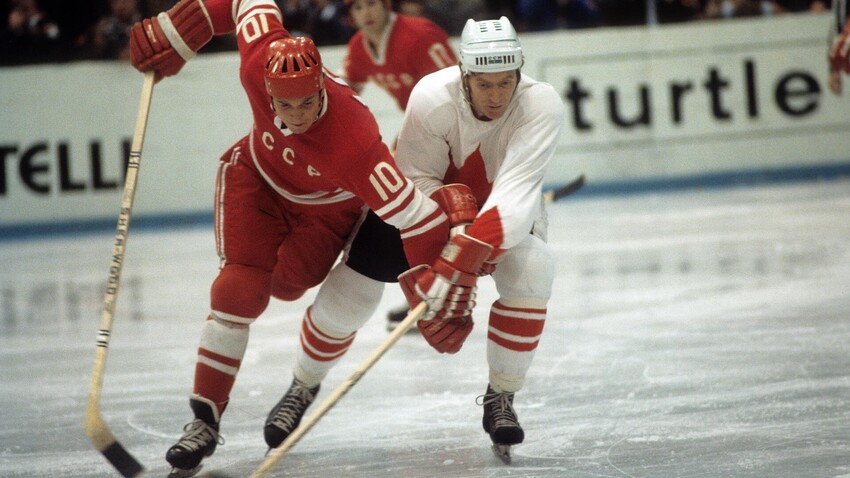
Aleksandr Maltsev #10 of the Soviet Union and Red Berenson #15 of Canada battle for the puck during the 1972 Summit Series at the Luzhniki Ice Palace in Moscow, Russia.
Melchior DiGiacomo/Getty ImagesIn this famous photograph taken in September 1972, Canadian reporter Dick Beddoes eats borsch with shredded pieces of his column he had written ahead of the first game between Canada and the USSR.
Surprisingly, Beddoes was not the only reporter who made an incorrect prediction and had to deliver on his promise by eating his own writing.
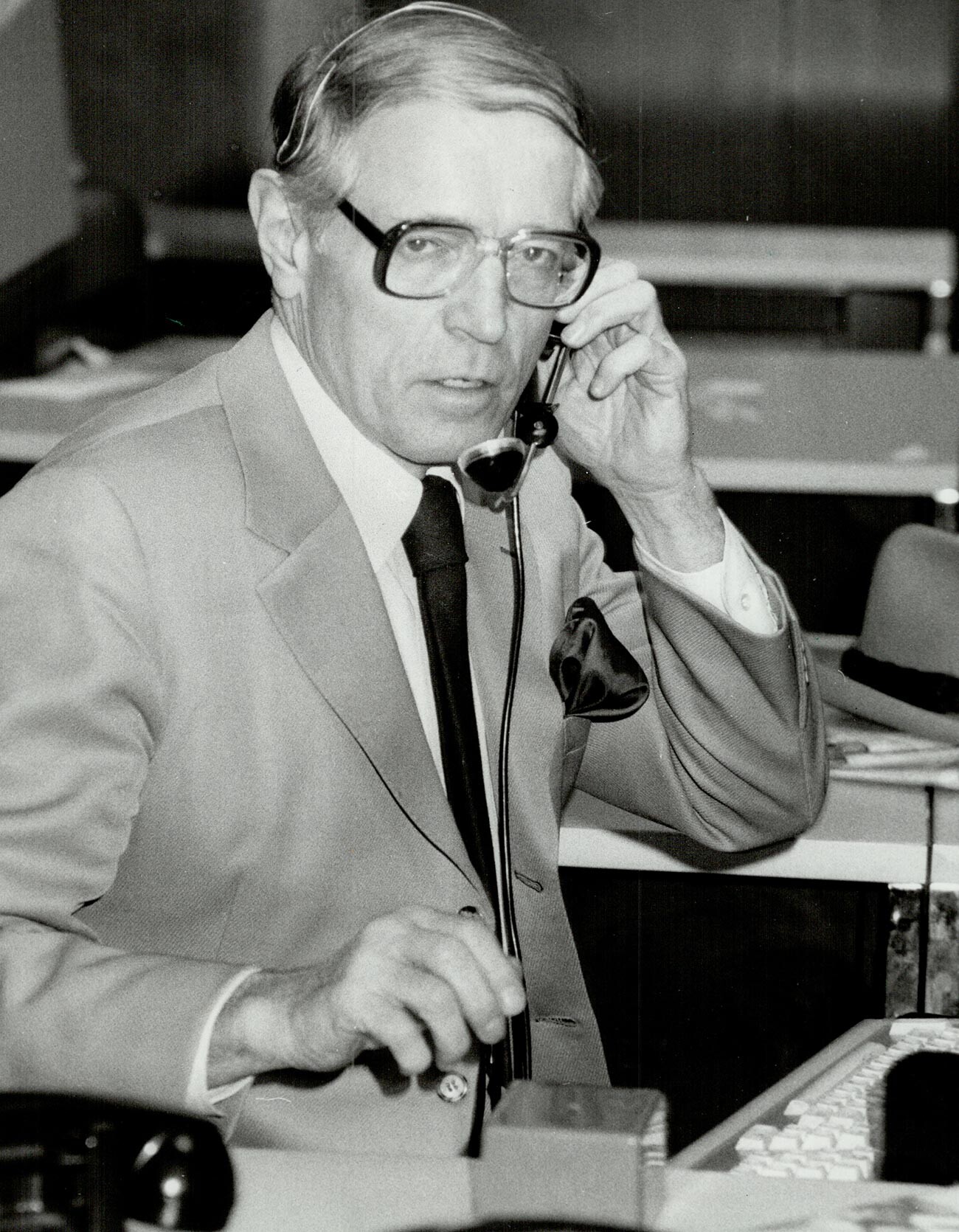
Dick Beddoes
Michael Stuparyk/Toronto Star via Getty ImagesAlthough the event was organized with the intention to create the best against the best competition in the sport of ice hockey, the stakes were much higher than during an average sports competition.
For millions of people watching around the globe, the games represented a rivalry of much bigger magnitude. For many, it was a question of ideological rivalry, the Free World struggling with communism. Reporters were not exempt from picking sides. In September 1972, objectivity became akin to treachery.

Some of the 3,000 Canadian fans cheer and wave the Canadian flag during the game between Canada and the Soviet Union in Game 6 of the 1972 Summit Series on September 24, 1972 at the Luzhniki Ice Palace in Moscow, Russia.
Melchior DiGiacomo/Getty ImagesOn one occasion in Moscow, five games into the series, Trent Frayne of The Toronto Star was reprimanded by tournament organizer Alan Eagleson. The two men spoke briefly outside an elevator at the Intourist Hotel in Moscow after game five of the series.
“What’d you think?” Eagleson asked.
Frayne replied he had been impressed by the puck control and passing of the Soviet players.
“You must be a f***ing Communist,” Eagleson exclaimed.
“It was the first time I’d seen the media united in a common cause,” said Ralph Mellanby, head of ‘Hockey Night in Canada’ “They are all against the Russians. It was amazing. The media were Canadians first and journalists second.”
Ahead of the 1972 Summit Series in Toronto, the consensus in the Canadian and American sports media was that Team Canada would prevail unconditionally over the Soviets.

Team Canada lines up during player introductions before Game 5 of the 1972 Summit Series on September 22, 1972 at the Luzhniki Ice Palace in Moscow, Russia.
Melchior DiGiacomo/Getty Images“The NHL team will slaughter them in eight straight,” wrote Gerald Eskenazi from The New York Times.
“Eight to nothing Canada — and that’s the score of the first game,” wrote Fran Rosa from Boston’s Globe.
Globe and Mail columnist Dick Beddoes, too, placed his bet: “Make it Canada eight games to zero. If the Russians win one game, I will eat this column shredded at high noon in a bowl of borsch on the front steps of the Russian embassy.”
The other Canadian journalist who made a prediction and supported it with a promise to eat his words was John Robertson.
Writing for The Montreal Star, Robertson took a position outrageously at odds with the general consensus in the Canadian media. He predicted that the Soviet team would win over the Canadian players. To back up his prediction which appeared extremely unrealistic for literally everyone in Canada at the time, Robertson promised to eat his column if proved wrong.
Among his colleagues and readers, John Robertson had earned a reputation as a provocateur.
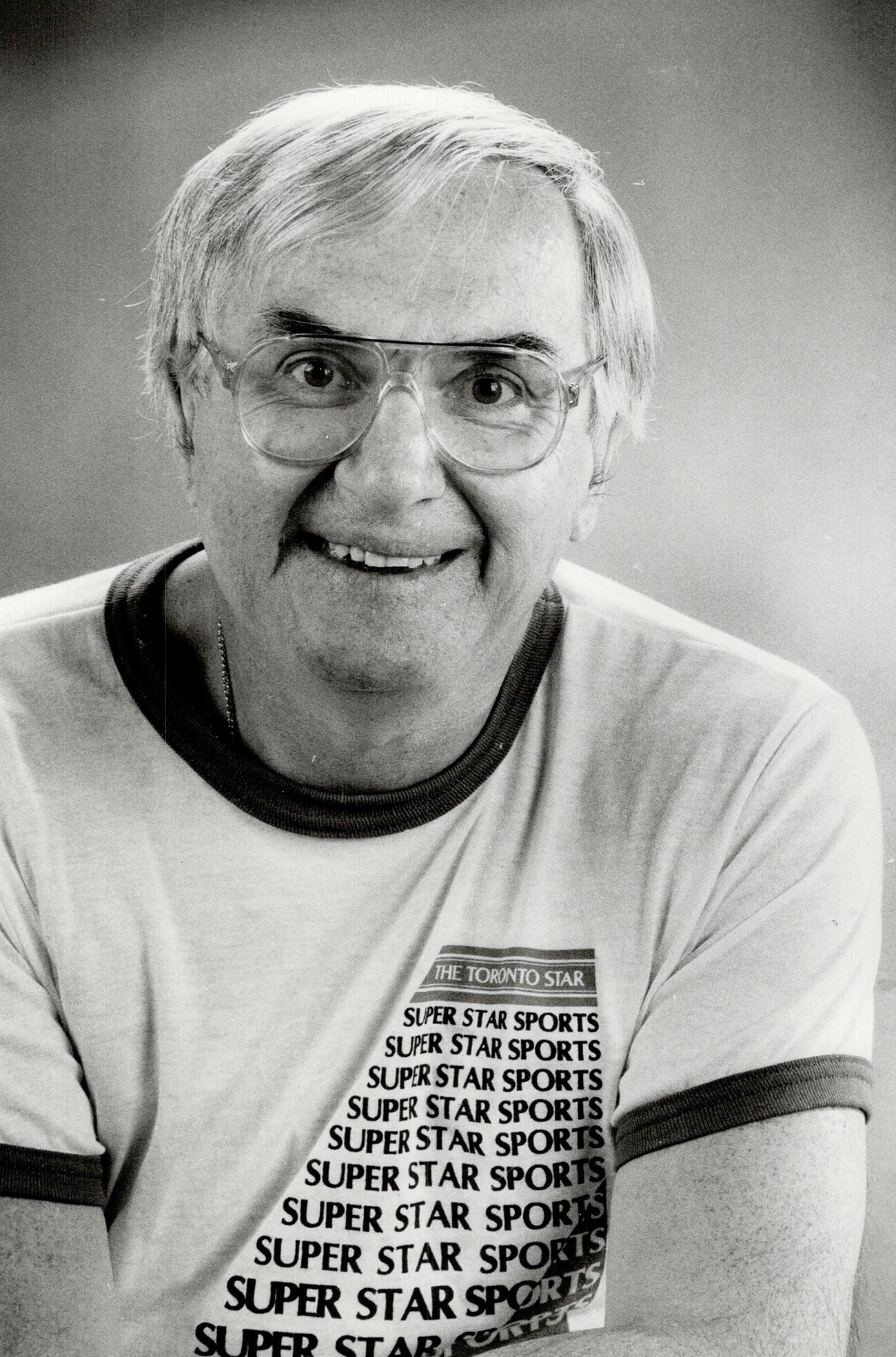
John Robertson.
Ron Bull/Toronto Star via Getty Images“Robertson, who was rarely subtle, often said that he became worried when his negative mail dipped below 80 percent of the total,” recalled William Houston writing for The Globe and Main in 2002.
In this particular case, Robertson infuriated literally everyone, the tournament organizers, the Canadian players and the readers.
Robertson himself claimed his prediction was calculated and based on his personal observations of the Soviet team at work and also on the inadequate portrayal of the Soviets in the Canadian mass media.
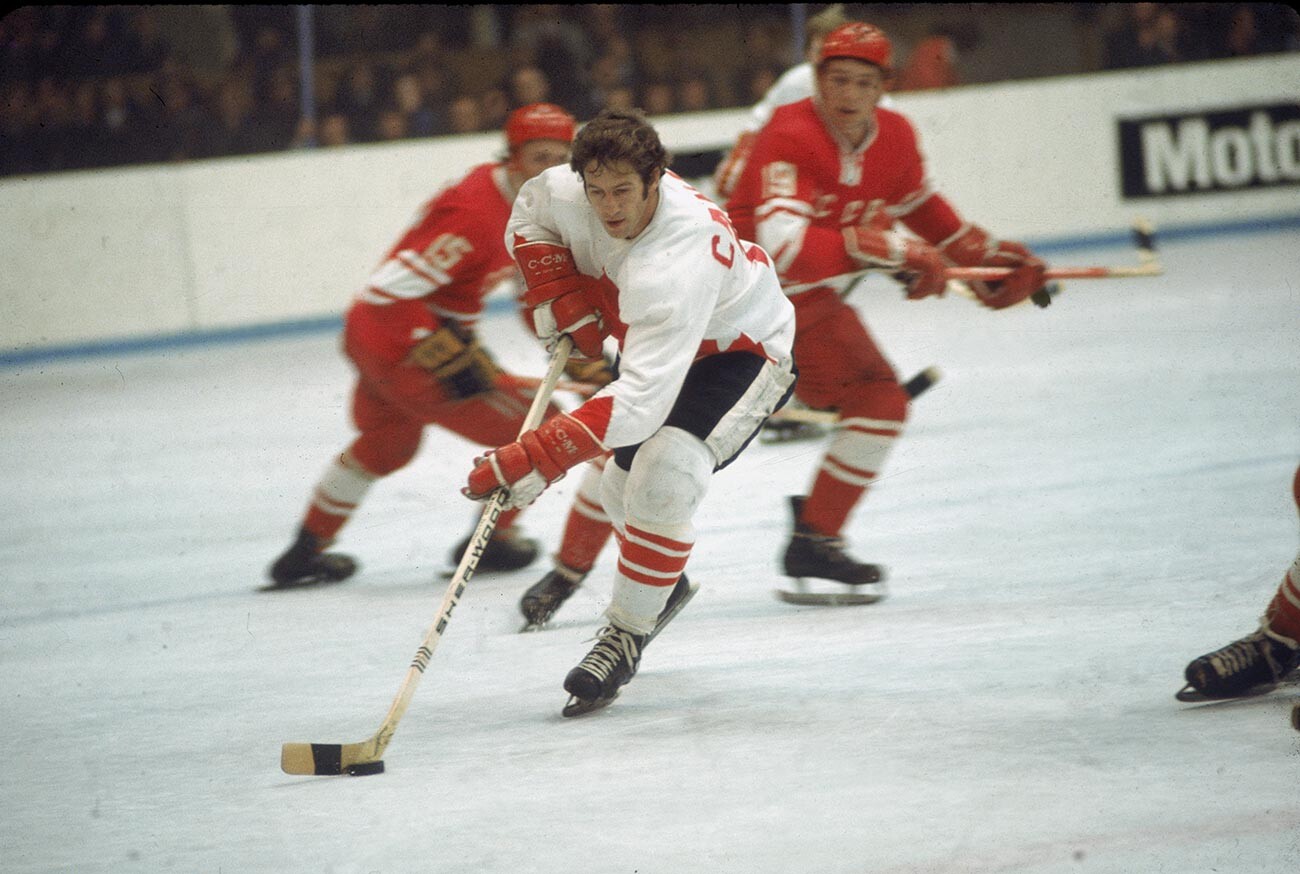
Canadian professional hockey player Jean Ratelle of Team Canada in control of the puck during a game at the 1972 Summit Series against the Soviet Union, September 1972.
Melchior DiGiacomo/Getty Images“Before the series started, I remember sitting in the stands with a bunch of the Canadian players. I loved these guys, but they were sitting there ridiculing the Russians’ equipment and laughing at them. Nobody wanted to give them a chance. The column was half serious and half frivolous. But I’d been to Russia and done stories on their hockey program. And I really felt they were a better team than anybody thought,” wrote Robertson later.
The first game of the series brought a major upset in the history of Canadian hockey. On September 2, 1974, the Soviets surprised 18,000 Canadian spectators, who had gathered in the Montreal Forum, by beating their rivals 7–3 against the odds.
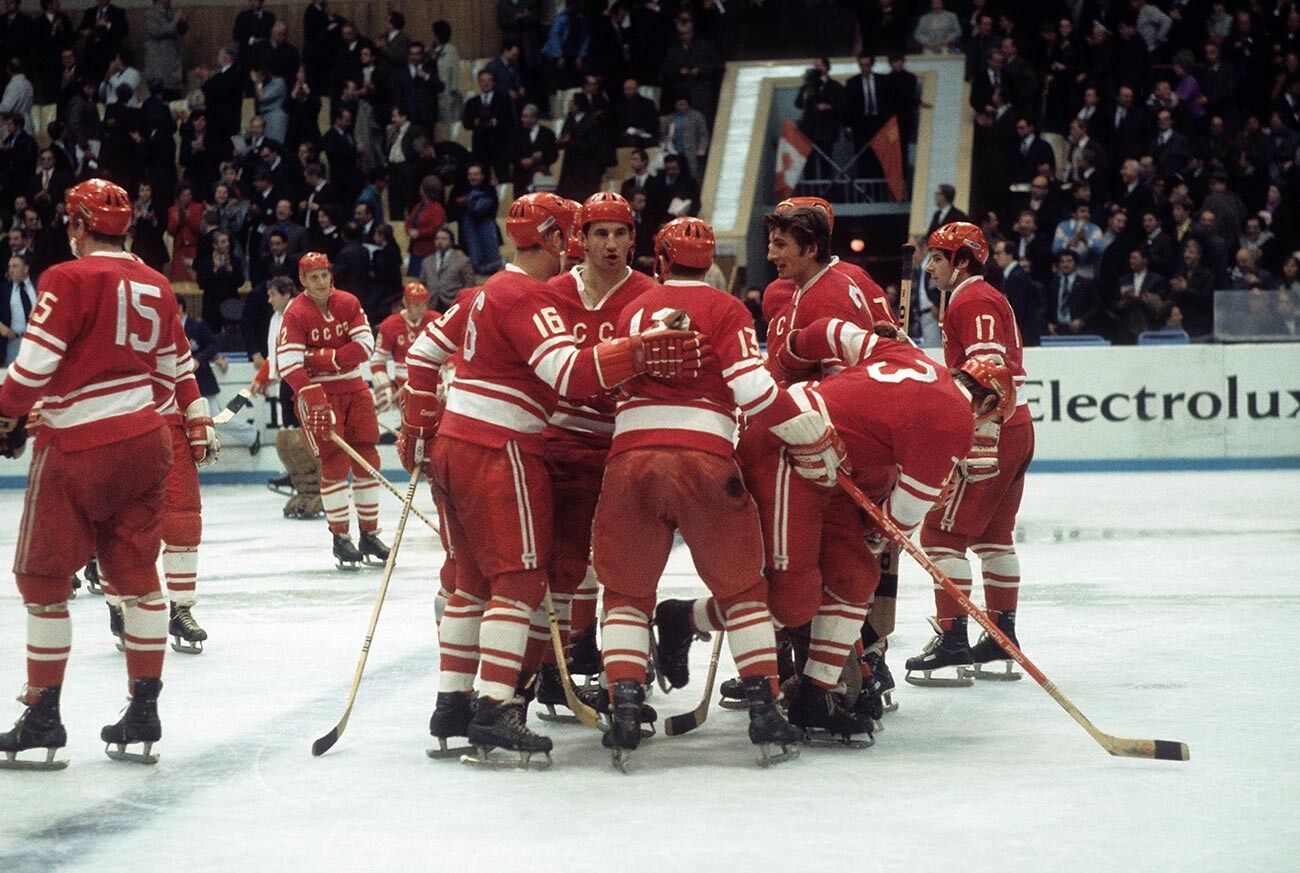
The Soviet Union team celebrates after winning Game 5 of the 1972 Summit Series on September 22, 1972 at the Luzhniki Ice Palace in Moscow, Russia.
Melchior DiGiacomo/Getty ImagesImmediately after the Soviet victory, the famous photo of Dick Beddoes eating borsch with pieces of his column on the front steps of the Soviet Embassy in Canada was taken. The journalist accepted the fact his prediction was incorrect and did not shy away from delivering on his promise.
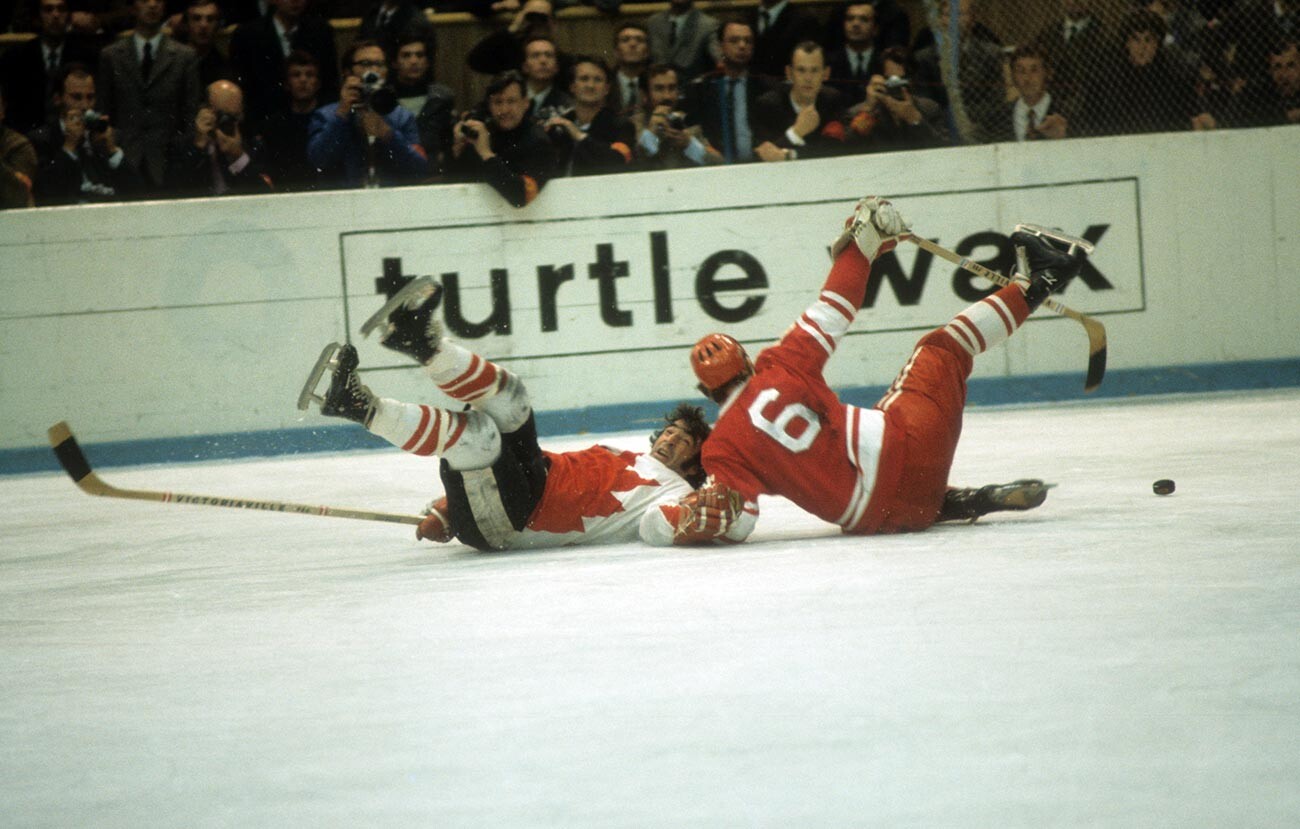
J.P. Parise #22 of Canada and Valeri Vasiliev #6 of the Soviet Union collide during the 1972 Summit Series at the Luzhniki Ice Palace in Moscow, Russia.
Melchior DiGiacomo/Getty ImagesIn the second game of the series, the Canadians won 4–1. Overall, Team Canada won four out of seven matches and prevailed over the Soviets, who won the remaining three. The Canadian-Soviet rivalry on ice went down in history as, perhaps, the most intense and competitive ever. Players of each team earned the respect of their rivals and audiences on both sides of the globe.
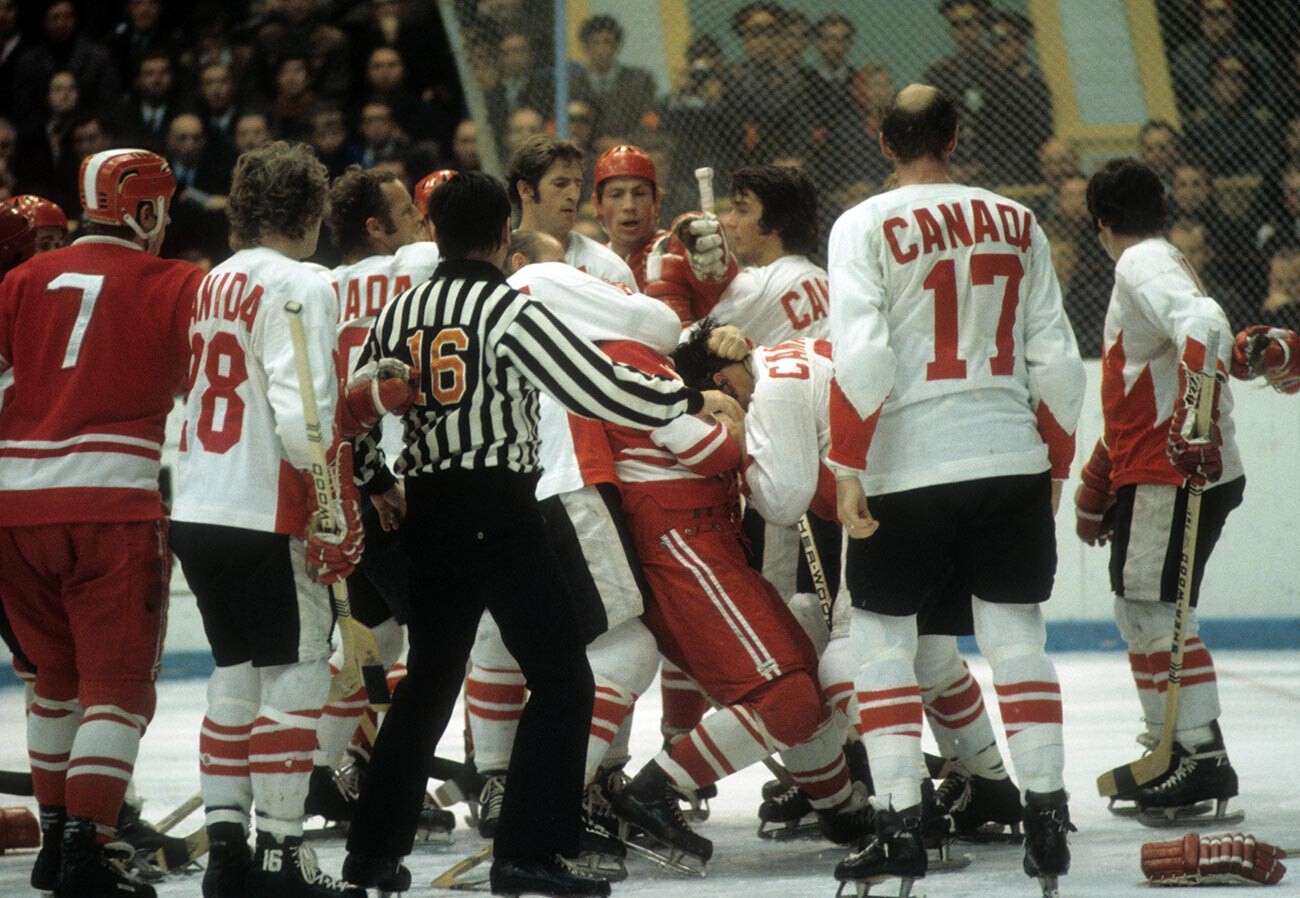
Rod Gilbert #8 of Canada fights with Yevgeny Mishakov #12 of the Soviet Union during Game 5 of the 1972 Summit Series on September 22, 1972 at the Luzhniki Ice Palace in Moscow, Russia.
Melchior DiGiacomo/Getty ImagesThe Soviet players gave a fight nobody in the Canadian press had anticipated. But, the Canadians, too, were prepared for the pressure and, once again, proved their leading status in the world of ice hockey.
As it turned out, John Robertson’s prediction – the victory by the Soviet team – was much closer to the outcome than the overwhelmingly optimistic prognosis of the Canadian press. However close Robertson was to the right outcome, he did not name it – as the Canadians did not lose to the Soviets as he had predicted.

Super Series of hockey games between the national teams of the USSR and Canada in 1972. Palace of Sports in Luzhniki.
Dmitry Donskoy/SputnikThe story goes that upon his return to Montreal from Moscow, Robertson’s colleagues served him a dish spiced with shreds of his column. A bet is a bet; the man did not blink, eating everything there was on the plate.
Dear readers,
Our website and social media accounts are under threat of being restricted or banned, due to the current circumstances. So, to keep up with our latest content, simply do the following:
If using any of Russia Beyond's content, partly or in full, always provide an active hyperlink to the original material.
Subscribe
to our newsletter!
Get the week's best stories straight to your inbox